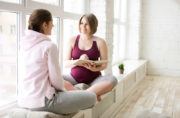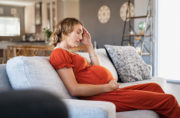4 Unplanned Pregnancy Statistics
Whether it’s called “unplanned” or “unintended” or “unwanted,” getting pregnant when you don’t want to can be is a shocking thing. But there is some information out there that the public needs to be aware of. Information is power. Arm yourself with these statistics.
This culture is obsessed with the visual. With social media, smartphones, smart TVs, and premium movie theaters, we love to see things with our own eyes. Seeing is truly believing. Seeing a pre-born baby can mean the difference between life and death for that baby. Seeing the baby’s fingers, toes, movements, and sex can make a world of difference in helping a woman make an informed decision.
According to Lifesnews.com, the Guttmacher Institute and the CDC, there are over 1 million abortions as the result of unwanted pregnancies, per year. These are women who are in crisis, who feel they have no other choice. Some, unfortunately, use abortion as birth control. There is more than one choice when you are faced with an unwanted pregnancy.
According to the National Council on Adoption, there are around 1 million people waiting to adopt. If we were to take the one million babies from the stat above and place them with the one million hopefuls, this crisis could be averted. Think about it. One million homes for one million babies. An adoption is a beautiful option.
Growing up in foster care can be traumatic. But aging out of the foster care system when a child turns 18 years old can be even more traumatic. Homelessness, incarceration, and joblessness are real risks that these young people face. Unplanned pregnancies are even more of a risk for young women coming out of the foster care system. If there is no permanency before the foster child turns 18, there will be not much permanency after 18, either. Why? Because the foster child has no adoptive or biological family to go back to. Thus, the cycle of generational dysfunction continues. Young adults need one caring adult to guide them through these turbulent years.
When faced with the toughest decision of her life, a woman should be presented with real choices. This is true empowerment. Giving a woman facing a crisis pregnancy an array of choices makes them feel loved, valued and full of worth. Don’t these women as well as their children deserve that?



